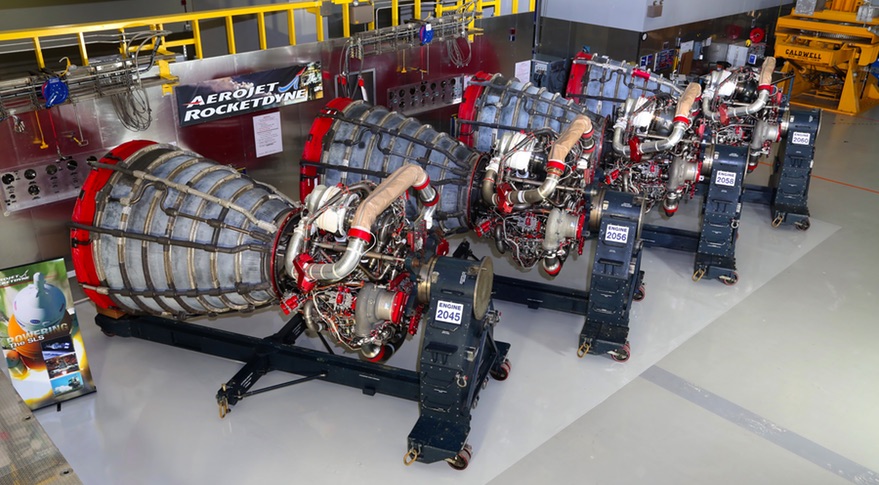NASA to Leverage Current Planning for 45-Day Exploration Report

COLUMBIA, Md. — A shift in focus in NASA's exploration plans to the moon won't have an immediate effect on planning for the first flight of the agency's Space Launch System rocket, now expected no sooner than late 2019.
At the Oct. 5 inaugural meeting of the reconstituted National Space Council, Vice President Mike Pence announced that NASA would be charged with developing plans for a human return to the moon as a stepping stone for later missions to Mars.
"We will return American astronauts to the moon, not only to leave behind footprints and flags, but to build the foundation we need to send Americans to Mars and beyond," Pence said at the meeting at the National Air and Space Museum's Udvar-Hazy Center. He directed NASA to develop a plan within 45 days to carry out that revised policy. [From Ike to Trump: Presidential Visions for Space Exploration]
That plan will be based on ongoing studies already in progress at NASA, said Jason Crusan, head of NASA's advanced exploration systems division, in an Oct. 10 presentation at the annual meeting of the Lunar Exploration Analysis Group (LEAG) here.
"We were already working on an exploration report that was required by Congress," he said, referring to provisions in a NASA authorization bill signed into law in March calling for development of a "human exploration roadmap" identifying long-term goals for human space exploration and missions needed to accomplish them.
The initial version of that report is due to Congress in December. "We're using a lot of that work being done for that exploration report now to answer this 45-day response time that we have," Crusan said. "How would we enable human return [to the moon] given the constraints that we all have?"
He said that analysis will include how the proposed Deep Space Gateway, a human-tended outpost in cislunar space, could support missions to the lunar surface. "It can enable robotic missions that way initially, and then human return," he said. "Or, do you pivot and just do human return directly?"
Get the Space.com Newsletter
Breaking space news, the latest updates on rocket launches, skywatching events and more!
He cautioned that a direct return to the moon might not be sustainable in the long run. "It could be achievable, but you would gut a lot of things in the process to go do that very rapidly," he said.
That plan, as it takes shape, appears unlikely to make major changes in the first launch of the SLS, known as Exploration Mission (EM) 1. That will be an uncrewed test flight of the Orion spacecraft, spending more than three weeks in cislunar space.
On EM-1, Orion will fly in a distant retrograde orbit around the moon, an orbit NASA originally studied for use on the Asteroid Redirect Mission (ARM) because of its stability. NASA formally cancelled plans for ARM earlier this year, but will still use that orbit for EM-1.
"We're continuing to use that orbit to push the systems," Crusan said. "We wanted to find a challenging orbit to send Orion into that pushes the overall performance of the vehicle to understand what the limits of it are."
The launch date of EM-1 remains uncertain. An agency spokesperson said last month that NASA would announce a new target launch date for the mission in October after performing reviews that took into account both technical issues with the development of SLS and Orion as well as weather events, such as hurricanes that shut down the Johnson and Kennedy Space Centers this summer. That statement came amid reports that the launch date was slipping to late 2019.
On Oct. 11, NASA announced it had identified the four RS-25 engines that will be used on the SLS for EM-1. Those engines are former Space Shuttle Main Engines that flew on 21 shuttle missions, including two engines that flew on the final shuttle mission in July 2011. The engines have been updated and tested for use on the core stage of the SLS.
"The Space Launch System team has made great progress and has an exciting year ahead as NASA conducts crucial structural tests at Marshall, assembles the core stage and the four RS-25 engines at Michoud and delivers more hardware to the launch pad at Kennedy," said John Honeycutt, SLS program manager at the Marshall Space Flight Center, in an agency statement. That statement did not disclose a projected launch date for EM-1.
This story was provided by SpaceNews, dedicated to covering all aspects of the space industry.
Join our Space Forums to keep talking space on the latest missions, night sky and more! And if you have a news tip, correction or comment, let us know at: community@space.com.

Jeff Foust is a Senior Staff Writer at SpaceNews, a space industry news magazine and website, where he writes about space policy, commercial spaceflight and other aerospace industry topics. Jeff has a Ph.D. in planetary sciences from the Massachusetts Institute of Technology and earned a bachelor's degree in geophysics and planetary science from the California Institute of Technology. You can see Jeff's latest projects by following him on Twitter.










